39 Yoga Terms You Keep Hearing in Class
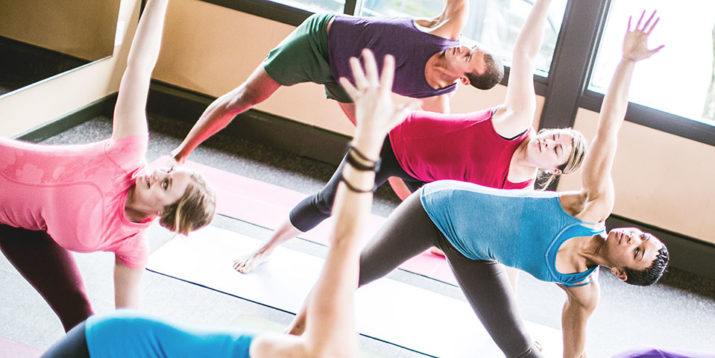
As a teacher, I’m often asked about the meanings of different yoga terms, from the names of yoga poses to the different types of yoga and the philosophical concepts commonly woven into yoga classes.
Here, with the help of several experienced teachers, we’ve compiled a list of the most common yoga terms you’ll encounter in a class, along with real-life examples of how you would use those “yoga words.”
If you’ve ever felt confused in a yoga class and don’t know your shakti from your shanti, this glossary of yoga terms is for you!
Ahimsa
“Ahimsa is traditionally translated as non-harming,” says Christa Fairbrother, RYT 500. “It’s about being caring and kind, and making the right choices for yourself.”
Also translated as non-violence, ahimsa is one of yoga’s five yamas (see below), or principles that guide individual behavior.
How you might hear it used in class: “Ahimsa starts with you — don’t go beyond your edge or push yourself too far.”
Apana

“Apana is the downward force of energy,” says Tucker Shelton, E-RYT 500, a yoga teacher based in Asheville, N.C.
It’s energy that moves from top to bottom. Poses that “ground” you or use downward energy, like goddess squats, promote apana.
How you might hear it used in class: “Feel your apana moving downward through your body as you settle into your squat.”
Asana
“Asana is simply the (Sanskrit) term for poses and postures in yoga,” says Katie Arnold, RYT 200.
She adds that asana once referred only to seated poses. “Yoga has transformed and evolved so much over the years, so that term now incorporates all of the poses you may see in class,” she says.
The word is built into the names of poses, too. For example, utkatasana (chair pose, explained below) or virabhdrasana (warrior pose).
How you might hear it used in class: “Your asana practice is getting so strong!”
Ashtanga
Ashtanga directly translates to eight limbs or branches, and it’s also a common, traditional style of yoga.
Ashtanga yoga is a physical, flow-style practice that follows a specific sequence of postures.
How you might hear it used in class: “Ashtanga yoga is intense — have you seen how many chaturangas they do?”
Bandha
Bandhas are energetic locks located throughout the body that can be accessed through muscle contraction.
They “act as ‘valves’ that direct the flow of energy,” says Renee Kennedy, RYT 200.
The three most common are: mula bandha (root lock, located in the pelvic floor), uddiyana bandha (abdominal lock), and jalandhara bandha (base of the throat).
Engaging the bandha at the navel (by contracting the abdomen up and in) can support the low back, Kennedy says, while “engaging the pelvic floor and throat locks encourage a flow of energy up and down the spine.”
Maha Banda involves contracting all three at once.
How you might hear it used in class: “Lift your pelvic floor to engage mula bandha.”
Bhakti
This term denotes a yoga practice that’s more spiritual, with a devotion to one’s personal higher power or god. “Bhakti is devotion, love,” says Shelton. “It’s the heart-centered practice,” he says, elaborating that traditional yoga practices are centered in either body, mind, or heart.
How you might hear it used in class: The studio offers a bhakti yoga class every weekend, with chanting and singing.
Bikram
Bikram yoga is a type of hot yoga named for its founder, Bikram Choudhury. Bikram yoga adheres to a strict set of rules, consisting of a fixed series of 26 poses performed in the same order.
You’ll sometimes hear “hot yoga” and “Bikram” used interchangeably, but hot yoga doesn’t follow as many rules, and often differs from one studio to the next.
How you might hear it used in class: “Bikram yoga is too intense for me — I don’t like to sweat that much.”
Chakra
Literally translated as “wheel,” a chakra is an energy center, the most common of which run along the spine.
“It’s CHUH-kruh, not SHOCK-rah,” says Shelton. The modern interpretation, he says, holds that chakras are focal points for physical, mental, and emotional energies.
How you might hear it used in class: “Your root chakra is at the base of your spine, and it is connected to your sense of safety and security.”
Chaturanga

If you’ve taken a power yoga or vinyasa class, you likely know what a chaturanga is.
Translated as “four-limbed staff pose,” chaturanga “is often a staple in vinyasa flow classes, and serves as a transition from plank pose into cobra or upward-facing dog,” says Kennedy.
The pose begins in plank, then on an exhale the body lowers so that your elbows are bent 90 degrees right at your sides (like the bottom of a triceps push-up).
How you might hear it used in class: “From plank, exhale into chaturanga, and transition into upward-facing dog.”
Drishti
Drishti means “gaze,” and it is “used in yoga practice to draw attention inward,” says Kennedy, who teaches in New York City.
“Being able to steady the eyes in one place throughout each pose and transition helps to slow the breath, find balance in the body, and avoid being distracted by others around the room,” she adds.
How you might hear it used in class: “(In Warrior II) focus your drishti to the middle finger on your forward hand.”
Flow
See “vinyasa.”
Guru
A guru is a teacher or spiritual guide. “While the term sometimes implies a holy or reverent figure, a modern guru may simply be a teacher or leader who students look up to or seek advice from,” says Kennedy.
You wouldn’t call every teacher you encounter a “guru.” The term is reserved for one who has a profound influence on your practice or life.
How you might hear it used in class: “I’m flying to India to study with my guru for a month.”
Hatha
Hatha has become an umbrella term for any type of yoga that integrates physical poses, but it often denotes a slower, gentler form of the practice.
The term derives from the Sanskrit word for force, or effort, and is based on the balancing of opposing forces. (Effort and ease, breath and body, etc.)
How you might hear it used in class: “I signed up for a hatha yoga class — it’s supposed to be rooted in the classics.”
Iyengar yoga
Named for its founder, B.K.S. Iyengar, this classical, alignment-based practice comes from India, having been popularized in the U.S. in the 1970s.
Iyengar yoga is noted for its abundant use of props: straps, blocks, and bolsters, as well as chairs, walls, and benches.
How you might hear it used in class: “We used, like, 12 blocks in that Iyengar yoga class.”
Mandala
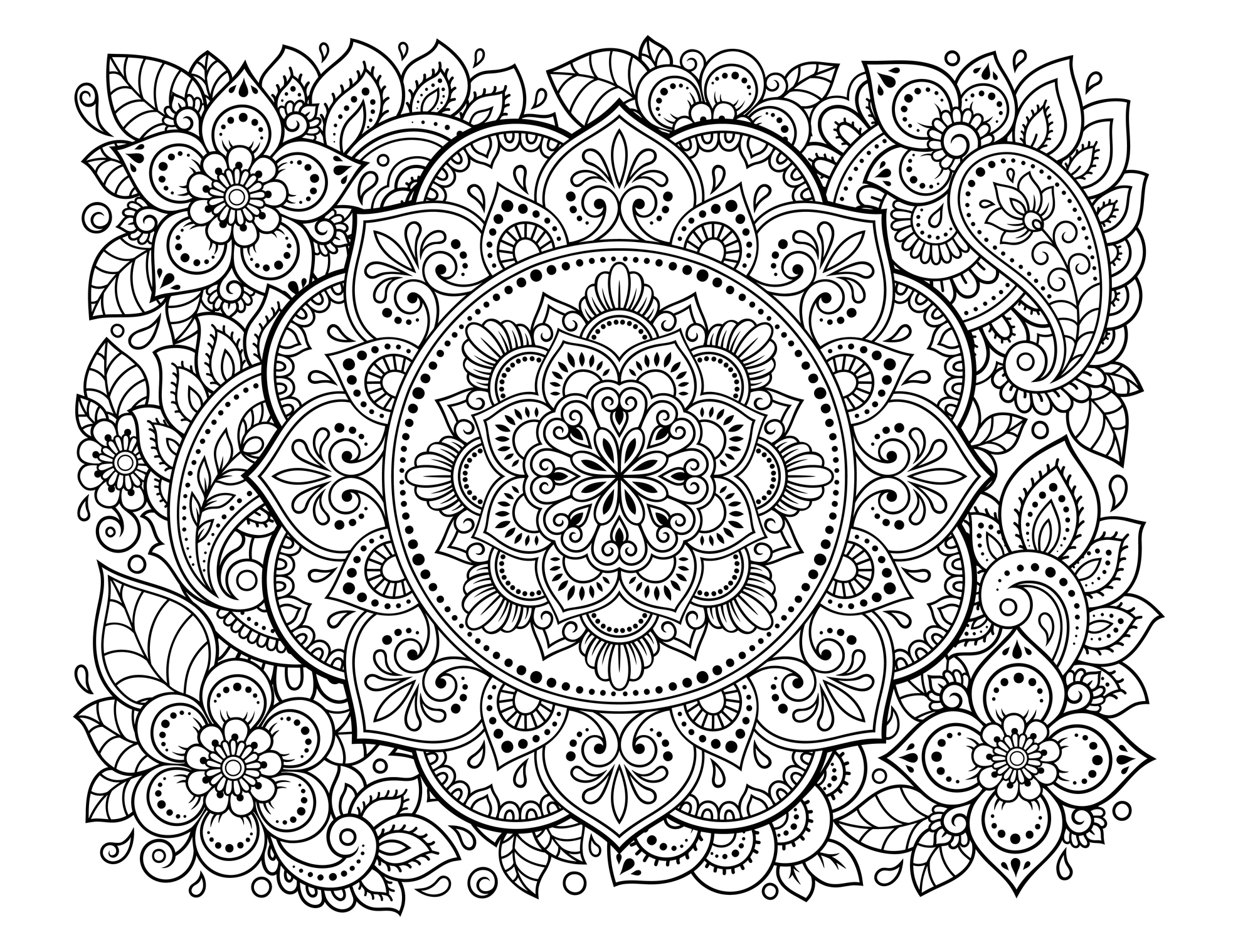
Mandala means “circle” in Sanskrit, and usually takes the form of a geometric pattern meant to represent the universe.
“Traditionally, mandalas were used to focus spiritual attention, and remind us of our relationship to the infinite,” says Kelly Morgan, Ph.D., a certified health coach and RYT 200. “Now, they are more frequently found in adult coloring books.”
How you might hear it used in class: “Coloring a mandala is part of my self-care routine.”
Mantra
Mantras are words, phrases, or sounds repeated within a meditation practice, to give the mind something to focus on.
You might repeat “om” or an English phrase, like “you are enough,” as a mantra.
“It helps draw attention to the present moment, and can even stimulate the body’s relaxation response,” says Kennedy.
How you might hear it used in class: “My mantra for the week is ‘just breathe.'”
Mudra
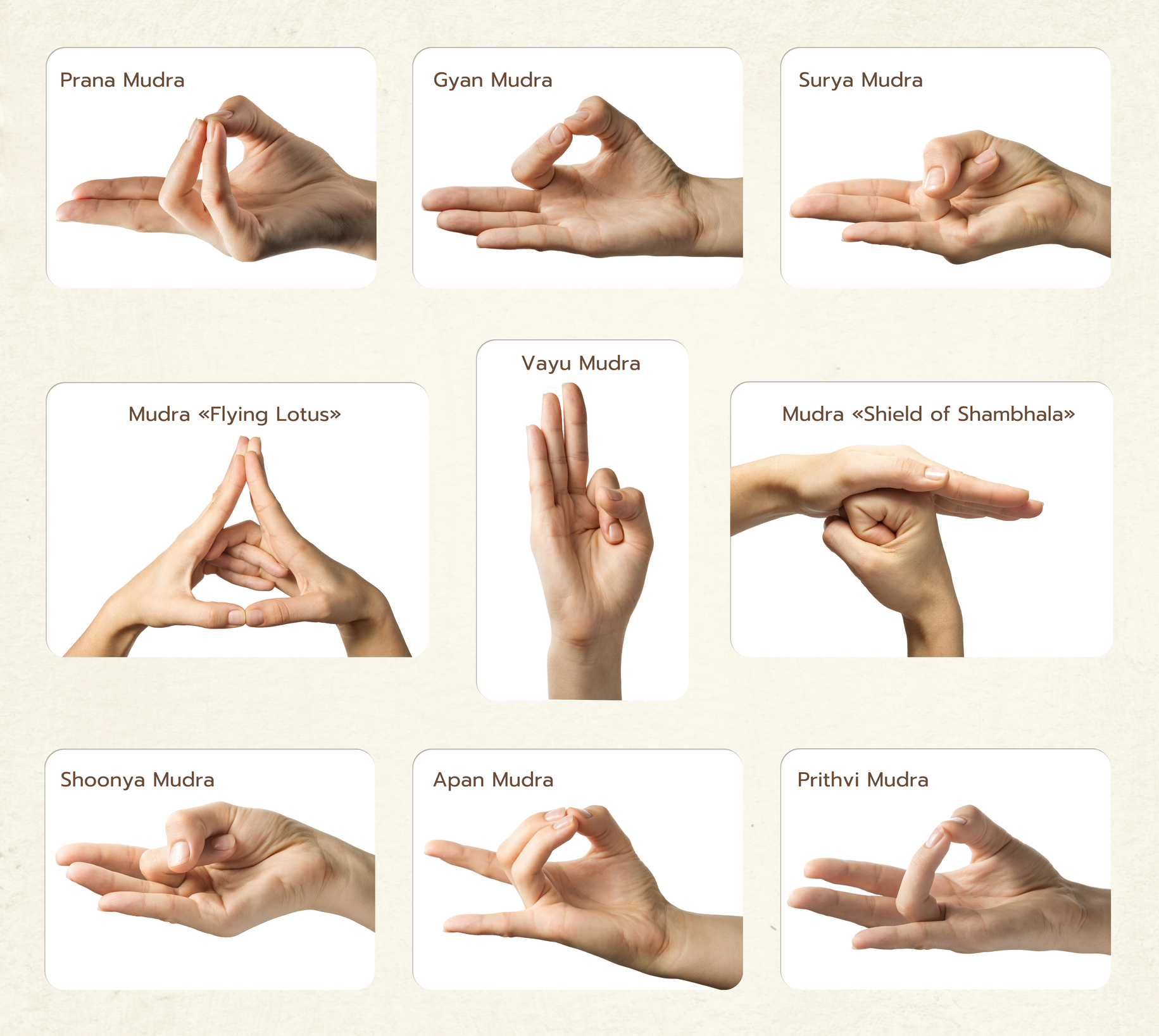
While mudra translates literally as “seal,” it refers in yoga to the hand positions used in poses or meditation practices.
“Each finger is associated with a different element, and connecting them in specific ways can direct the flow of energy in the body to convey a certain intention,” says Kennedy.
She adds that different mudras can help you feel strong, energized, or grounded.
How you might hear it used in class: “Bring your thumb and forefinger together, into gyan mudra.”
Namaste
Nowadays, you’re as likely to see “namaste in bed” on a tank top as hear this greeting’s traditional usage.
It means “I bow to you,” and it’s often used at the very end of a yoga class. “Saying ‘namaste’ is acknowledging that you recognize and reciprocate the light and good in another soul,” says Kennedy. (The appropriate response to “namaste” is “namaste.”)
How you might hear it used in class: “I’m so grateful you shared your practice today — namaste.”
Niyamas
See “Yamas and Niyamas.”
Om
Om (or aum) is a syllable in Sanskrit, and it’s commonly used as a mantra. It is believed to be the vibration of the entire universe, and as you say it, you may feel the tingling vibrations throughout your entire body.
“Using om as a mantra is a way of connecting ourselves with nature and the universe,” says Morgan.
How you might hear it used in class: “Let’s close our practice with an om.”
Prana
Prana is a yoga term often described as the opposite of apana. It translates as “vital life force” or “energy,” and is sometimes used synonymously with upward energy.
Your yoga practice encourages prana to flow throughout the body by breathing slowly and steadily.
How you might hear it used in class: “Don’t stop breathing — keep your prana moving throughout your body.”
Pranayama
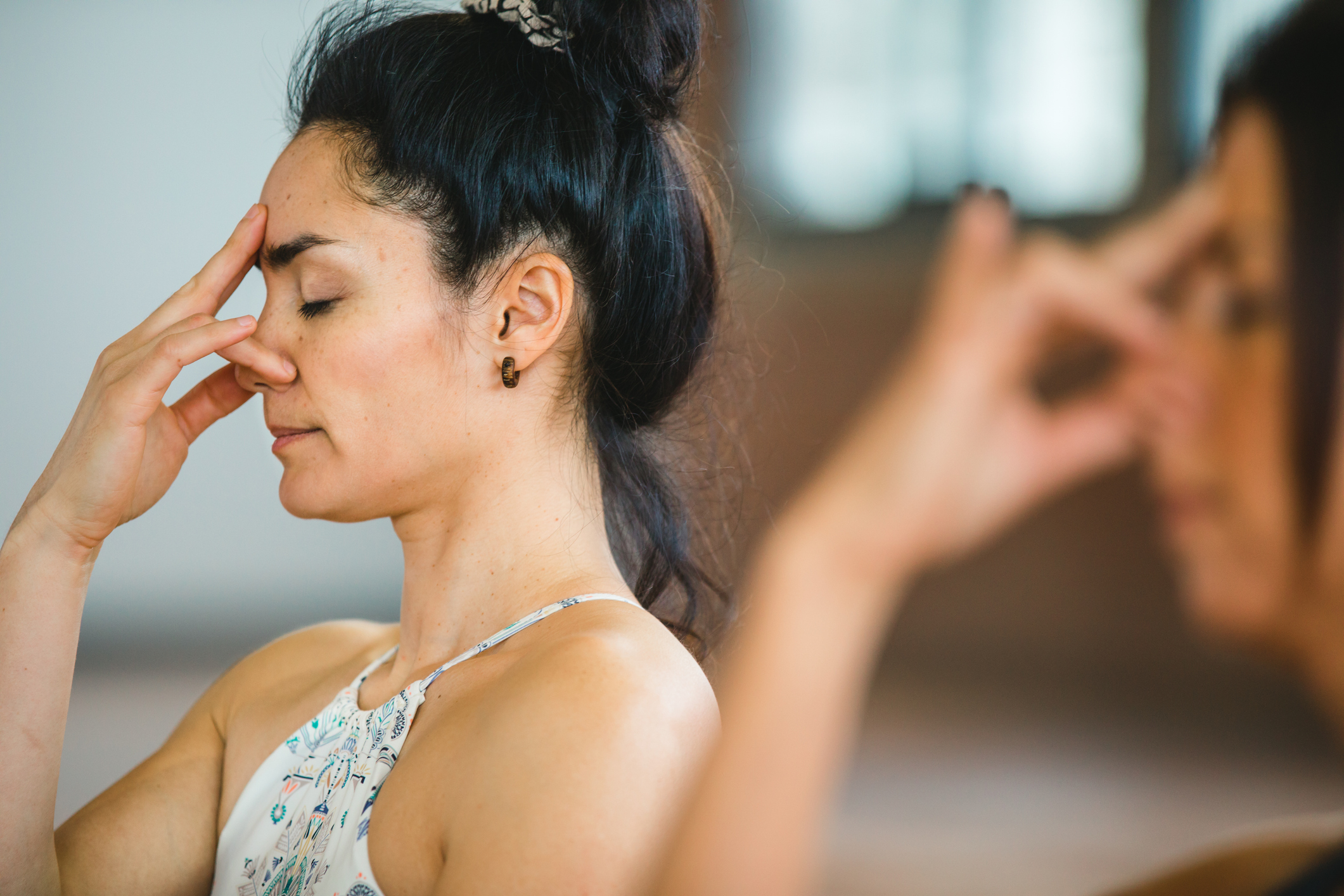
Like asana and meditation, pranayama is a branch, or limb, of yoga. “You’ll often hear yoga instructors talking about your breath or telling you when or how to breathe,” says Arnold, who teaches in Grand Rapids, MI.
“This is pranayama, or the act of controlling your breath.” Pranayama can be used to create more energy or more calm in the body, and breathing exercises are also used to relax the body before meditation.
How you might hear it used in class: “Before we head into savasana, come into a seated position for pranayama.”
Restorative
Restorative yoga is a type of yoga that uses props to help the body relax completely during poses.
Each position is held for a few minutes (sometimes longer), and the practice is designed to pacify the nervous system.
How you might hear it used in class: “Grab a bolster, some blocks, and a strap for the restorative poses we’ll do later.”
Savasana
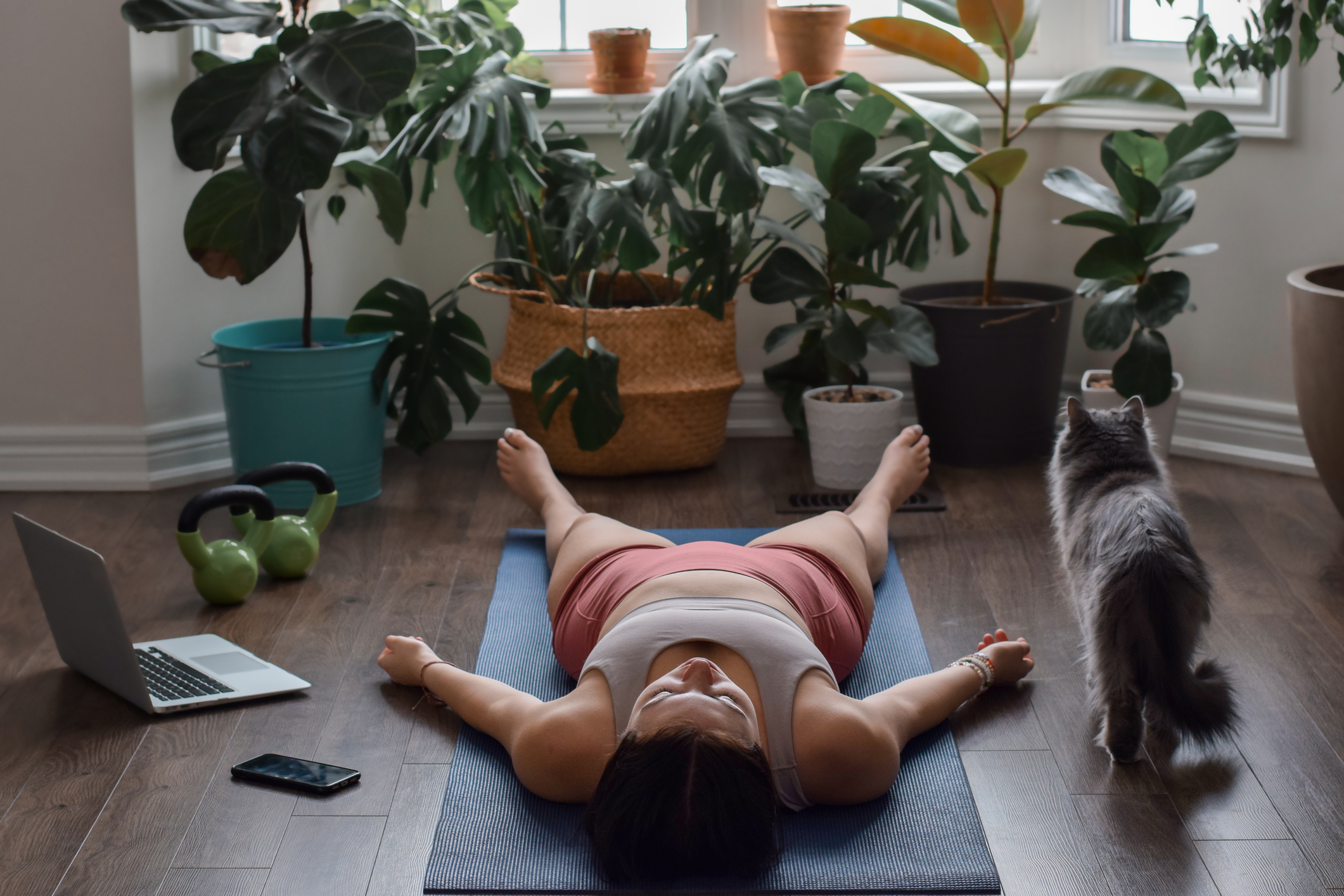
Savasana is called “corpse pose” or “final rest.” It’s usually the last pose in a yoga class, though some forms of yoga, like Sivananda yoga, start with savasana or integrate it in the middle, as well.
“You know that pose at the end of class when you’re lying on your back, your legs and arms are out long, and you swear lying down has never felt better in your life? That’s savasana,” says Arnold. “We live such busy, nonstop, connected lives, and while it can be hard to just be still sometimes, this is something that we generally don’t make enough time for.”
How you might hear it used in class: “I’m just here for savasana — it’s my favorite pose!”
Shakti
“In Hindu tradition, the goddess Shakti is the divine mother who represents the feminine energy in the universe,” says Morgan.
You might hear this word in a shakti yoga class or when your instructor leads you into goddess squat (a.k.a. plie squat). “Shakti energy is important for creativity, emotions, health, and vibrancy as well as taking in positive energy while ridding yourself of the negative,” adds Morgan.
How you might hear it used in class: “There are so many women in class today. Can you feel the shakti energy?”
Shala
A shala is a yoga school that, literally translated, means “house” in Sanskrit. While most styles of yoga in the West are practiced at what we call studios, some traditional forms — like ashtanga — use the term shala.
“In this country, we interpret [shala] pretty differently,” says Fairbrother. “It could be your studio and yoga communities.”
How you might hear it used in class: “I’m heading to practice at the shala this morning.”
Shanti
Shanti means “peace,” says Fairbrother, who teaches in Gulfport, FL.
Since shanti is a relatively short and simple word, she often teaches it in the kids yoga classes she leads. You might hear it paired with “om” at the end of your yoga class.
How you might hear it used in class: “Om shanti, shanti, shan-ti-hi. Om, peace, peace, peace.”
Sun salutation/surya namaskar
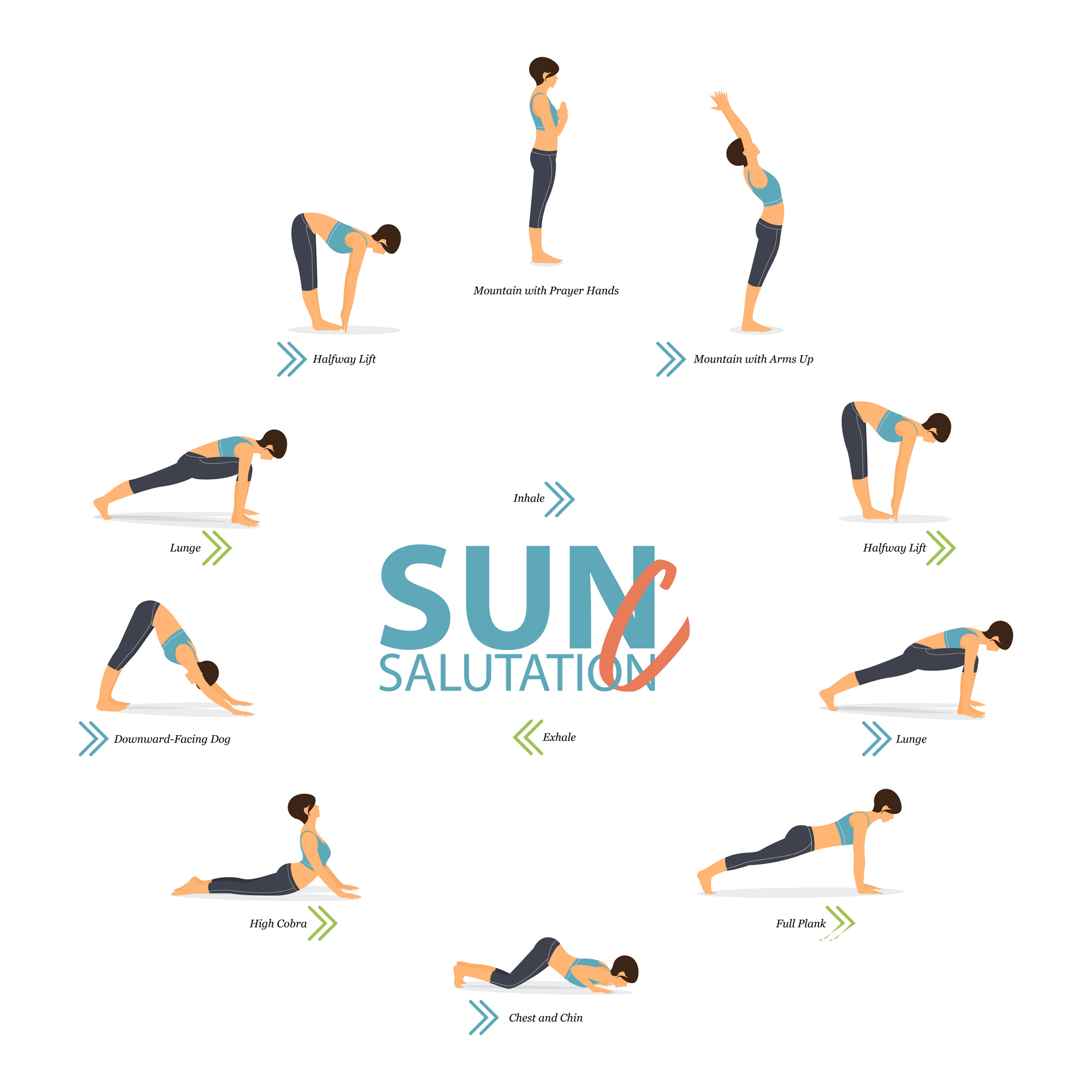
Sun salutations (translated from “surya namaskar”) are sequences designed to warm up the entire body, using vinyasa to connect breath and movement.
Many types of yoga, including ashtanga, use “sun salutes” at the beginning of a practice.
Sun salutation A starts and ends in tadasana (see below), with half and full forward folds, plus a vinyasa.
Surya namaskar B is bookended by utkataskasana (see below) and adds two more vinyasas, plus warrior 1 pose.
How you might hear it used in class: “Let’s warm up with some sun salutations, starting with surya namaskar A.”
Sutra
The Yoga Sutras is a book of aphorisms that explain the spiritual as well as physical “limbs” of yoga. Sutra means “thread,” says Shelton.
“They’re pieces of wisdom to understand the divine,” he says. So when put together, sutras form “a tapestry of wisdom.”
How you might hear it used in class: “In yoga sutra 2.46, we learn that our practice should be a balance of strength and ease.”
Tadasana and Samasthiti
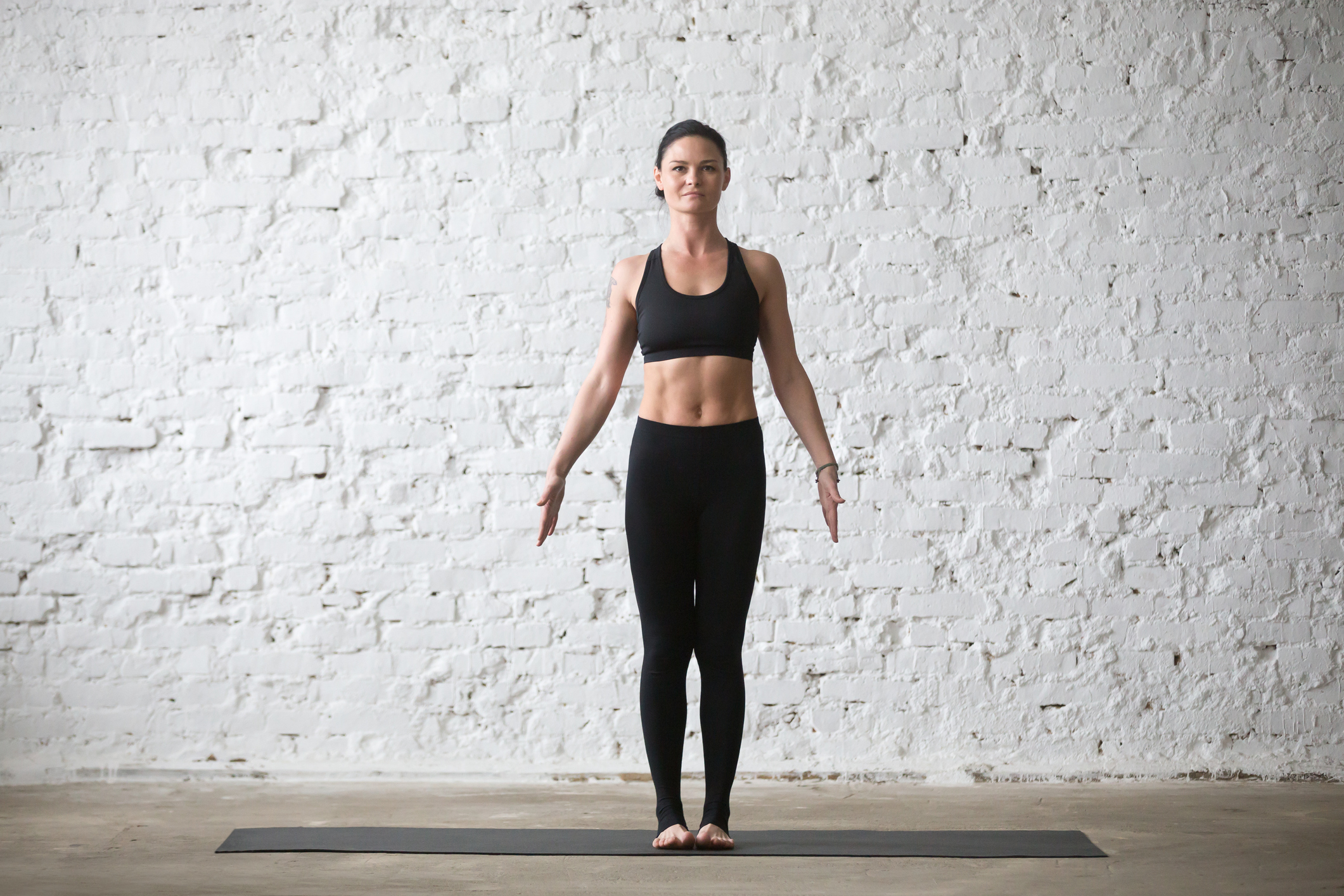
Tadasana, or mountain pose, “is the foundation of all standing asanas,” says Morgan.
“Though it is a simple asana, tadasana is an active pose that aligns the body and connects body and breath through a lengthened spine,” she adds.
Samasthiti, which translates as “equal standing,” is “the practice of standing with weight equally in both feet, body steady and still,” explains Morgan.
How you might hear it used in class: “Come to tadasana at the top of your mat.”
Tantra/Tantric
Forget what you think you know about tantra or tantric yoga. Tantra “is a yoga that uses the body as a spiritual tool to transcend good and bad in the world,” explains Morgan. “Tantric yoga, though most often associated with sex in popular culture, focuses on the idea that reality is an expression of divine energies.”
Expect a practice with chanting, breathing exercises, and visualizations.
How you might hear it used in class: “I just took a tantric yoga class, and it was so different than what I had heard about tantra.”
Ujjayi
Commonly used in ashtanga yoga and other vinyasa-style yoga, ujjayi means “victorious or warrior breathing,” says Shelton.
If you’ve ever been in yoga class and heard your neighbors’ breath, they were likely performing ujjayi breathing.
The breath enters and exits through the nose, and is brushed across the back of the throat, to “enliven the sense organs and make you more present,” says Shelton, who has a master’s degree in contemplative religious studies and Sanskrit.
How you might hear it used in class: “Start your ujjayi breath and focus on it throughout your practice.”
Utkatasana

Utkatasana is commonly called “chair pose,” but it also means “fierce pose,” says Fairbrother.
This pose is part of the traditional sun salutation B, and it’s a common standing pose. (Learn how to do utkatasana and other yoga poses for men.)
How you might hear it used in class: “Lower your hips and come into utkatasana, chair pose.”
Vinyasa
Vinyasa is more than a type of flowing yoga. It translates as “to place in a special way,” explains Arnold, referring to the sequencing of breath and movement in “flow yoga.”
In addition, the term vinyasa is used as a noun to describe a specific transition, from plank to chaturanga, to up dog, and finally downward dog.
You can do vinyasa yoga for beginners in Day 4 of BODi’s 3 Week Yoga Retreat.
How you might hear it used in class: “Take a vinyasa, or go straight to downward dog.”
Yamas and Niyamas
Yamas and niyamas are two of the philosophical branches, or limbs, of yoga.
Yamas offer behavioral guidelines: nonviolence (ahimsa), honesty, not stealing, moderation (sometimes called celibacy), and non-possessiveness.
Niyamas, subsequently, are concepts to embrace: purity, contentment, self-discipline, self-study, and surrender (to a higher power).
Fairbrother explains them as “the 10 commandments of yoga,” which traditionally supersede asana, or the physical component of the practice.
How you might hear it used in class: “The yamas and niyamas are the bases for all we are and do as yogis.”
Yin Yoga

A slower style of yoga, yin yoga emphasizes longer holds of up to five minutes or more.
Yin yoga is rooted in martial arts and helps to increase circulation in the joints and improve flexibility. Also based on Chinese meridians, it uses props to let gravity do the work on your connective tissues.
How you might hear it used in class: “My hips are so tight from HIIT training — I really need some yin yoga.”
Yoga
Yoga means “union” or “to yoke.” In the West, we more commonly use it to refer to the physical side of the practice.
However, yoga also encompasses spiritual and mental aspects, including pranayama, meditation, and the yamas and niyamas.
How you might hear it used in class: “Yoga is such an important part of my life now!”
Yogi/Yogini
Yogi is the male (or gender-neutral) term for a practitioner of yoga; yogini is the female version.
“It’s not uncommon to hear ‘yogi’ used for all of us,” says Arnold. There’s no prerequisite for using this yoga term; whether you’ve taken one class or have been practicing for decades, you’re a yogi if you do yoga.
How you might hear it used in class: “I never thought I would become a yogi.”
